Buying the right metal powder for your 3D printer at the right price is less of a challenge than it once was. Not only are there more metal powder manufacturers specializing in materials made especially for additive manufacturing, but they’re also taking the mystery out of the materials with far more transparency and data.
Powder prices have fallen significantly in the past decade, primarily due to growing competition but also in part through further optimization of the processes involved in creating powder for 3D printing from metal feedstock material, according to industry research by SmarTech/6KAdditive.
With so many different metal powders to choose from, it can be difficult to find the right solution and the right vendor for your application. Although the majority of metal powder bed 3D printing today is done with the metal materials recommended by the printer maker, you do have a choice.
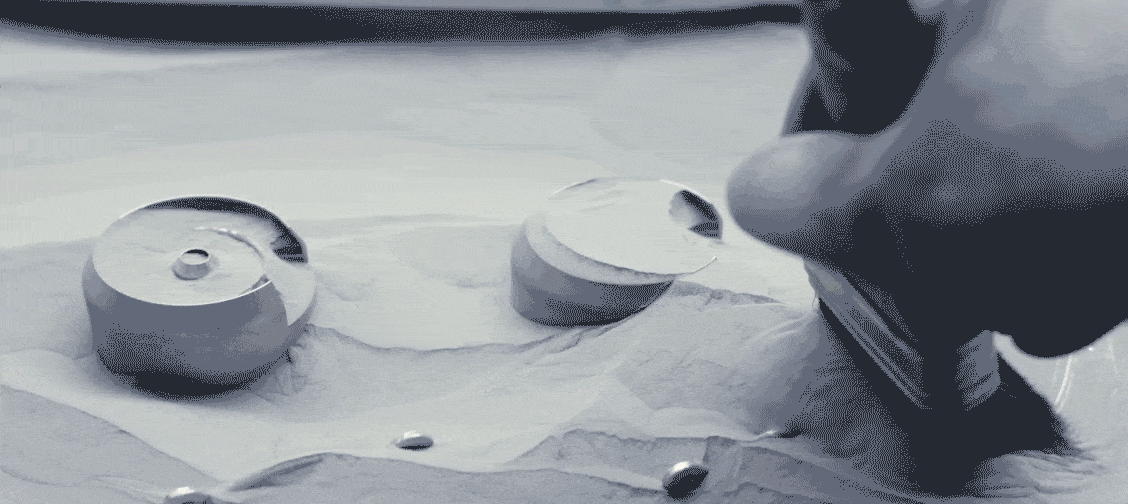
In fact, there’s a lot more to consider in selecting a metal powder, and there’s no single best solution. For your specific application, you’ll balance the metal characteristics, price, recyclability, sustainability, compatibility with your printer, regulations in your industry, and other factors we detail below.
Here, we talk with metal powder experts about what you need to know to select the right powder for your application and the metal technology you’re using, whether it’s laser powder bed fusion, binder jetting, electron beam powder bed fusion, or one of the various DED methods.
We also list the top material makers and which powders they offer. Let’s dive in!
Understand Metal Powder for 3D Printing
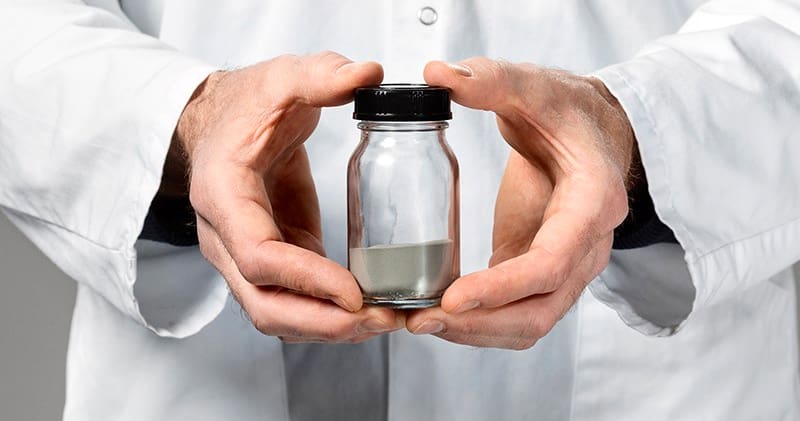
You don’t need to be an expert in metallurgy to 3D print metal parts, but there are broad topics you should understand, even if you’re putting the powder selection in the hands of a metal material developer.
First, throw out everything you know about metals. It may not apply to additive manufacturing.
“For people who are just getting into the [AM] industry, they tend to treat the feedstock the same way they would bar stock for machining or for forging, and they tend to be completely different,” says material scientist Jacob Nuechterlein, founder and president of Elementium 3D, which develops and supplies high-performance metal powder alloys for 3D printing.
Not only is the metal feedstock different, but what you can do with it, and the parts you can create is nothing short of a paradigm shift for metal engineers, says Nuechterlein. “When it comes to material selection, there’s a lot you can do with additive that is just impossible with other manufacturing methods, and that’s really freeing, but it’s also something that people aren’t used to.”
For example, additive manufacturing can create parts with complex geometries, with hollow or lattice-filled internal elements, and consolidate parts, which enables engineers to consider metals that weren’t on the radar before because of cost or mechanical properties.
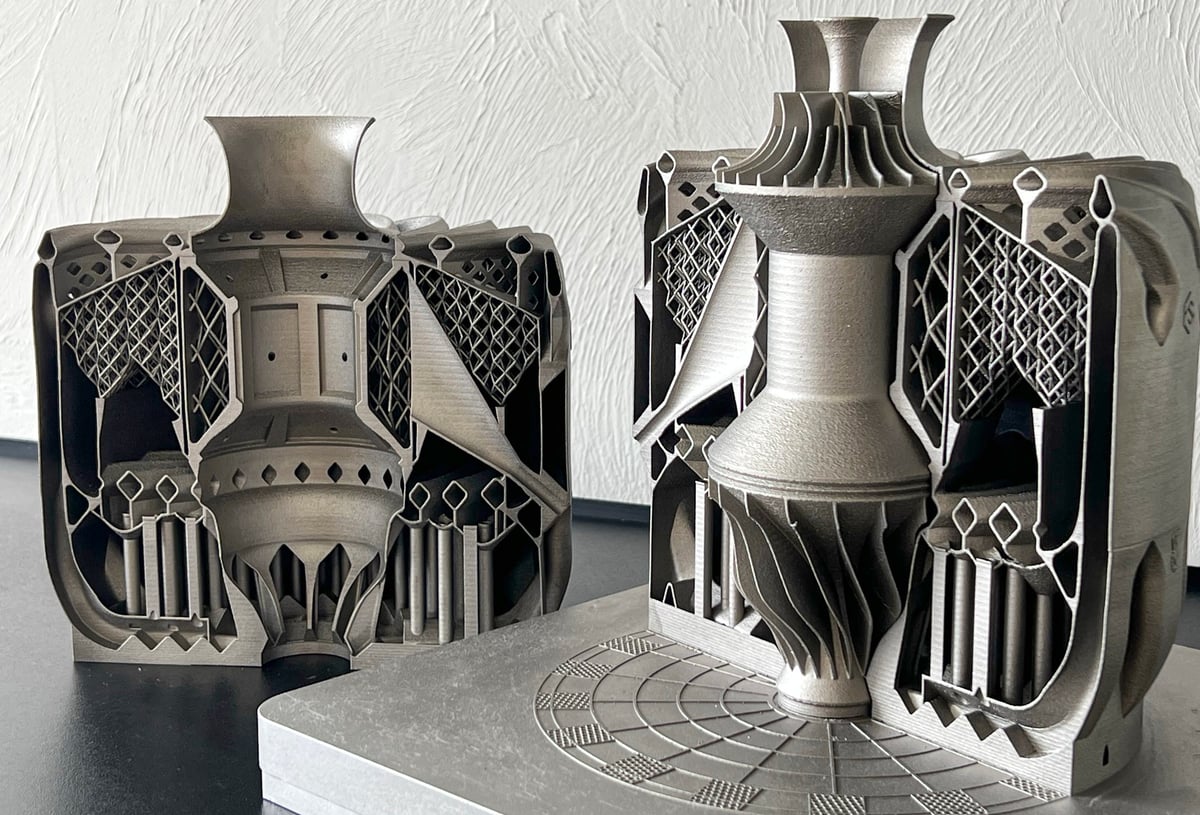
“AM opens new metal options for applications compared to conventional manufacturing,” echoes John Barnes, founder and CEO of Metal Powder Works, which develops metal and polymer powders for 3D printing. “I’ve seen scenarios where the design went from aluminum to a nickel superalloy, which was very counterintuitive until you consider that the nickel alloy has higher stiffness and is stronger, both of which enable thinner walls, which are important when your application wants more surface area.”
For every industry that uses metal, additive manufacturing offers new material options you may not have considered before.
What To Look For in Metal Powders for 3D Printing
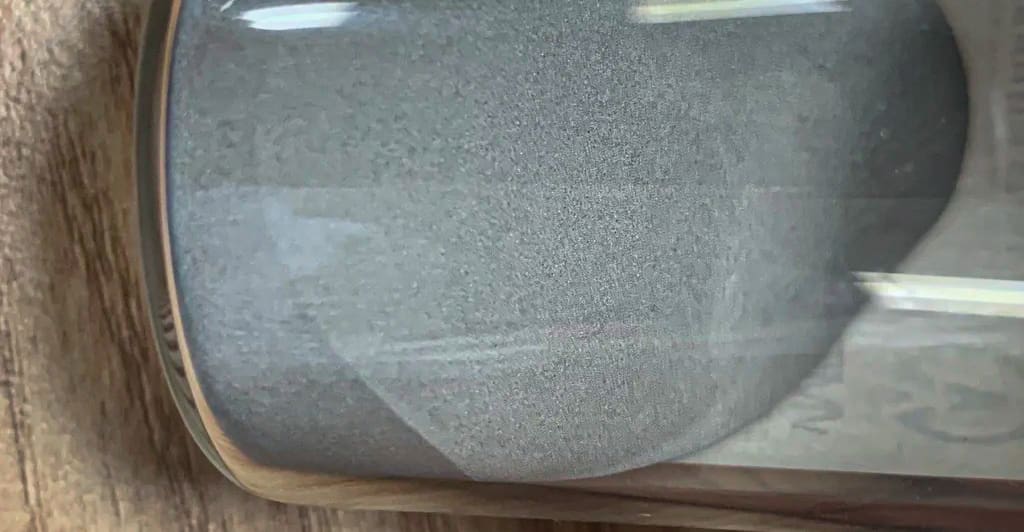
Many metals are considered commodities, but metals for additive manufacturing are definitely not. The metal AM material market is expected to grow from 6,852 tons in 2022 to more than 42,000 tons in 2027, according to the latest Ampower market report, which also notes that currently, metal power for AM makes up roughly 2% to 3% of the overall metal powder market.
Yet, s more metal manufacturers enter the market offering metal powders for AM, they aim to differentiate their products by highlighting how they are not like any other metal used in manufacturing.
Metal powders produced for laser powder bed fusion are not the same as metal powders for injection molding. These powders are processed in various ways and differ from each other in their exact chemical makeup, how round the particles are, their density, and more. But it’s not a Wild West of metal powder production. There are at least five standards organizations issuing guidance on metal powder raw material specifications and qualification of the final parts for additive manufacturing.
ASTM International (formerly the American Society for Testing and Materials) frequently updates its document, F3049 titled “Standard Guide for Characterizing Properties of Metal Powders Used for Additive Manufacturing Processes” ($50). This guide lists test methods and characterization techniques for evaluating the properties of metal powders, such as chemical composition, which you’ll find on your powder specification datasheet.
The Aerospace Material Specifications (AMS) database by the Society of Automotive Engineers (SAE) lists roughly 16 metal powder specifications for individual materials used in the aerospace industry, such as titanium alloys. There are also AM standards by the American Welding Society, “Standard for Fabrication of Metal Components using Additive Manufacturing”, and NASA’s Marshall Space Flight Center has at least two compliance guides, including “Specification for Control and Qualification of Laser Powder Bed Fusion Metallurgical Processes” that cover metal powder raw materials.
The landscape of standards and regulations is constantly evolving, and there is no metal powder that would meet the standards of every industry.

- Compliance to the standard for your industry
- Certified and consistent chemical composition
- Satellites, meaning extra debris within the metal particles
- Sphericity; a measurement of the roundness of particles (measured from .7 to 1.0)
- Flowability; a measure of how well the powder flows (testing methods vary)
- Apparent density, which reduces shrinkage during sintering for binder jetting applications
- Lot-to-lot consistency
- Local production (to avoid supply chain disruptions)
In addition to these attributes above, many of which can be found on material data sheets, powder manufacturers will say their powders enable you to print faster than those from the competition. They’ll say their powders shrink less, prevent cracking, and result in denser parts than other powders, and fortunately, many will provide samples to prove their point.
Metal Chemical Composition
You probably already know all aluminum is not the same. There are endless alloy variations, so when you’re shopping for titanium, for example, one of the most common metal materials used in 3D printing, there are differences among products in chemical composition that will affect the mechanical properties of your final part.
The exact chemical composition of your metal powder is provided by the manufacturer in a certificate of compliance and a chart that will look something like the image below.

“The fundamental process of printing with these powders — the melting and solidifying — has chemical implications, and certain alloys lose element amounts in that vaporization process,” says Ellen Williams, chief development officer at Exum Instruments. “So you need to make sure that you have more of that element in the initial powder.” Exum makes a desktop-size machine for the rapid characterization of metal powder, called the Massbox.
Various metal 3D printing processes and different brands and types of 3D printers will have unique effects on metal powder chemical composition. Some industry experts believe there can even be differences between machines of the same brand and type.
The importance of metal powder chemical composition depends on your use case and industry. Most likely, your metal 3D printer vendor has partnered with a metal powder manufacturer to test and confirm that certain powders result in certain consistent part properties when printed on their machines with certain printing parameters.
But what about the metal powder that you reuse from one print to the next? Leftover metal powder from one build is typically mixed with virgin powder and reused for the next print, even though it can be somewhat chemically altered during the first printing process. To confirm that your reused powder still has the chemical characteristics you need, you can have it analyzed, which can be done at a service if you don’t have the equipment in-house.
“In certain industries, regulations dictate that you can’t use any recycled powder,” notes Williams, “but there are other industries that use that powder in the print bed, mix it with a little bit of virgin powder, and then go ahead with the next print.”
Roundness of Metal Powder Particles
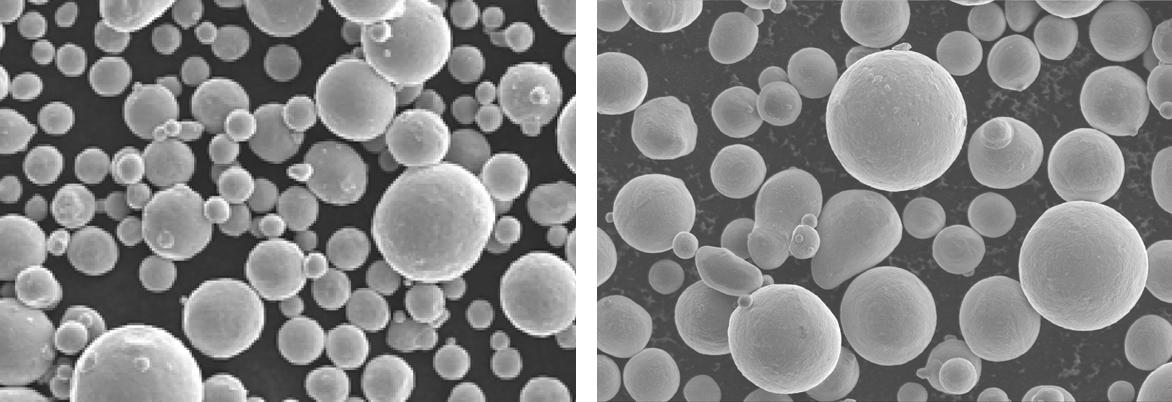
Chemical composition isn’t the only factor that separates one powder from another. There’s also the shape of the individual granules.
Because the most popular type of metal 3D printing, laser powder bed fusion, involves spreading a very thin layer of powder across the build platform, how well your powder spreads makes a difference.
Each tiny granule of metal powder for LPBF is typically processed to be spherical. The rounder and more uniform the particles are, the better they will flow in the 3D printing process, like a pile of marbles, to produce a uniform part build.
These “marbles” also come in different sizes. The smallest (≤ 16 microns to 45 microns) is typical for binder jetting and cold spray applications, and the slightly larger (15 – 53 microns) is the typical range for laser powder bed fusion applications.
If you’re using an electron beam powder bed fusion 3D printer, your powder particles would be in the 45-micron to 106-micron range, and for most directed energy deposition technology, powder particles are 53 microns to 150 microns. By comparison, powder for metal injection molding is often finer, in the ≤ 16-micron range. A metal powder product may say it’s applicable for both LPBF and binder jetting or EB-PBF and DED.
But don’t get hung up on round, cautions Barnes. “Roundness is a characteristic among many. The behavior of the population of powder particles is more important. Round is not implicitly required for additive manufacturing but is an artifact of the atomization process.” Atomization is what we cover next.
How Metal Powder is Made
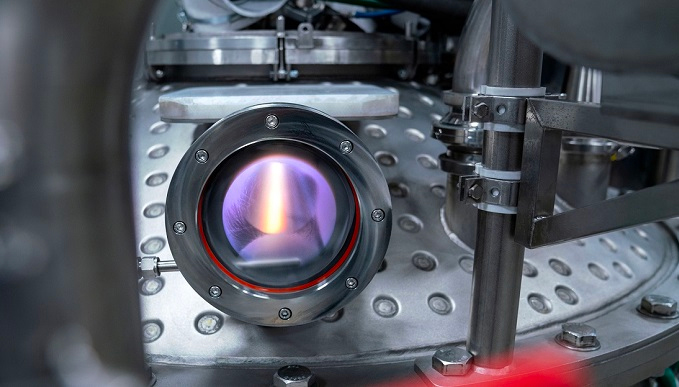
The way metal is made into powder for 3D printing, metal injection molding, and other uses, is through different types of atomization using atomization machines. Depending on the atomization technique (water, gas, plasma), powders can have various shapes and features. During atomization, the metal is shaped into particles, and anything (up to 70%) not round enough or not the right size is filtered out and recycled, which leads to smaller batches and adds to the cost of the material.
Metal powder for additive manufacturing is almost exclusively made through gas or plasma atomization, whereas metal powder for other types of manufacturing is made through water atomization, a less expensive method. Gas and plasma can produce rounder and more consistent size metal particulates. This method represents only 5% of the world’s capacity for making powder.
“The process for making metal powder hasn’t been fully optimized yet,” says Matthias Schmidt-Lehr, CEO of the additive manufacturing consultancy Ampower. “Many companies, like 6K Additive with their microwave process, are working on making it less wasteful and more economical.”
Metal Powder Works, likewise, offers a new approach that is more efficient than traditional atomization producing less waste and emitting 90% less CO2 than atomizing.
“AM parts manufacturers are looking for more material choices and consistency while keeping an eye on CO2 emissions,” says Barnes. “Powder producers similarly are exploring various ways to reduce CO2 emissions and support the growing, but still infant market for AM.”
What's the Best Metal Powder for 3D Printers
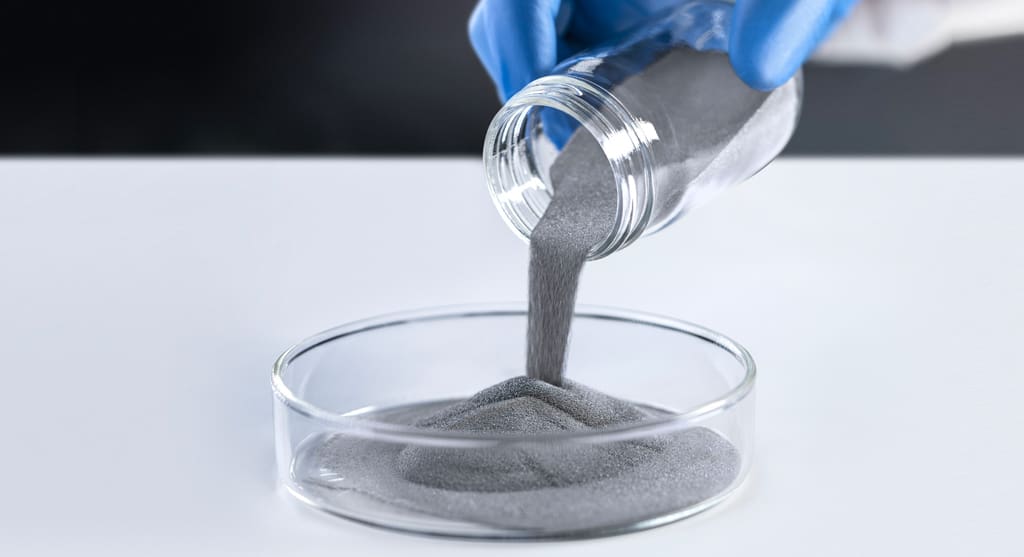
The 3D printer and the metal powder are equally important when selecting an additive manufacturing solution, but are you stuck using only the powders validated or recommended by the printer manufacturer? Can you shop around?
Yes and no, says Schmidt-Lehr. “As long as a metal powder can be welded with a laser, it is applicable to a laser powder bed fusion printer, but I would advise any customer who is in an early phase of adapting metal additive manufacturing to start with standard materials the vendor recommends.”
Printer vendors offer their own metal powders (or recommend vendors) that are optimized for their specific machines. OEMs, such as EOS, SLM, and Trumpf, typically establish relationships with metal powder manufacturers, like many listed below, or have their own powder production facilities. They painstakingly research the ideal printer settings and particular material characteristics to offer users an easier and more predictable 3D printing experience.
“There are a thousand ‘dials’ specific to metal powder,” notes Barnes, “which can look and behave quite differently coming from supplier A versus supplier B, which means it’s going to behave differently in the printer.”
You can, however, still shop around for the cheapest powder or one with unique characteristics if the recommended materials don’t fit your needs.
“If you later realize you need better material properties in your parts, you can hire someone to develop print parameters for you or develop the powder for you,” notes Schmidt-Lehr. “There are companies like Rosswag, for example, who do individual parameter development for customers.”
Powder manufacturers typically provide printer parameters for their powder for a specific technology, such as laser powder bed fusion, but they aren’t specific to any particular printer manufacturer. Schmidt-Lehr estimates that developing your own printer perimeters from scratch “would take two or three months if you’re a skilled LPBF user and have developed perimeters before at an institute or another type of research setting where you have the equipment to test metal parts for density and strength.”
In other words, deviating from the approved powders your 3D printer vendor has validated is a bit of a gamble for less experienced users.
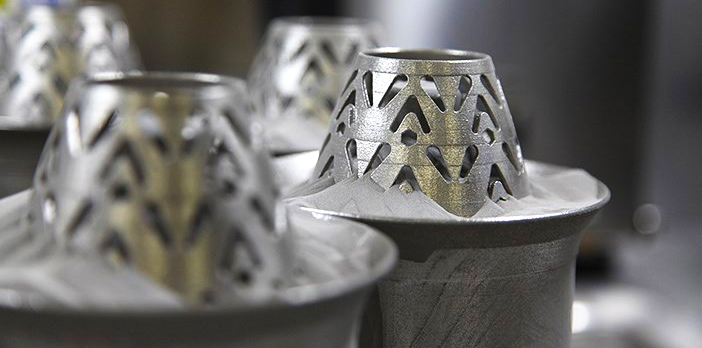
“You could translate the print parameters of a material to another printer, but it would take some time and effort to really dial in because they’re all slightly different,” adds Nuechterlein. “And not just not just manufacturer to manufacturer, but even within the manufacturers going from one platform to, let’s say, their larger platform.”
Many metal manufacturers start with the recommended powder and then begin branching off to investigate other suppliers of that same material to make sure that they have a diversified supply base, notes Nuechterlein.
Your 3D printer vendor should provide detailed information on each powder approved for its machine and how the material performs when 3D printed. Specific printing perimeters should produce parts that have a specific (range) for tensile strength, e-modulus, elongation, hardness, and other attributes. Many vendors lock the print perimeters, while a growing number tout the ability for users to tune the machine to their needs.
How Much Does Metal Powder for 3D Printing Cost?
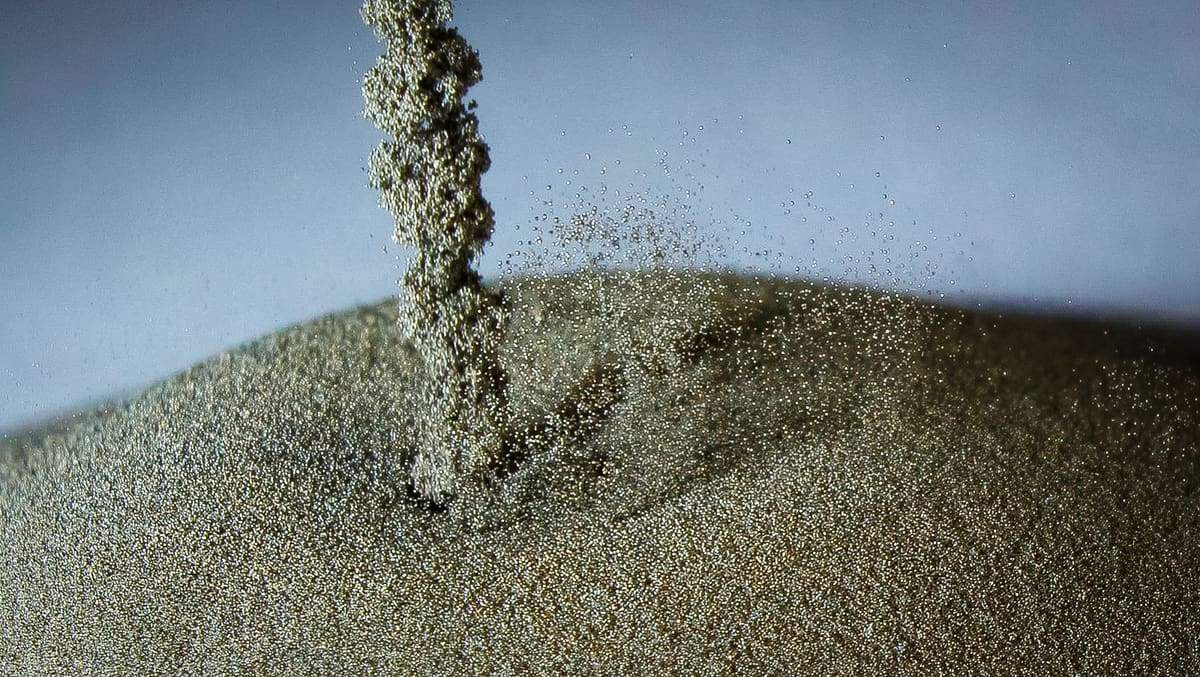
Metal powder can range anywhere from $40 per kilo for standard aluminum to $2,000 per kilo for speciality alloys, which translates to $200 to $4,000 per build run depending on the powder, the size of your powder bed, and how much powder it will hold.
Standard Metal Powder for AM Price Ranges
- $40 – $50 per kilo for aluminum and stainless steel
- $80 – $100 per kilo for cobalt and nickel-based alloys
- $170 – $230 for titanium
Metal powders are more expensive than most other metal types, but there’s more that goes into calculating your part cost than powder.
“Simply concluding that the cost of my 3D printed part is going to be way more expensive because the materials are more expensive is the biggest mistake people make in calculating how much a 3D printed metal part will cost,” says Nuechterlein.
3D printing enables you to produce parts using less material than traditional manufacturing while achieving the same mechanical properties. Material left over from one print run can be used for the next, so there’s almost no waste. Plus, you can also print more parts per 3D print run compared to processes such as injection molding or forging and there are no molds or tools required.
This changes the formulation for costs. For example, there’s no calculation for the material that’s machined away because you don’t normally have much material loss. Next, there’s the weight of the material and the lighter-weight parts possible with additive manufacturing that also require different cost calculations. “The difference in price between printing out of 316L and printing out of Inconel 625 is relatively small,” says Nuechterlein.
In other industries, the cost of feedstock enters into the total cost of the part pretty heavily. “In additive manufacturing, depending on the feedstock, it can be anywhere from 2.5% of the total cost of the part up to 30% with some rare materials,” notes Nuechterlein. “The price depends on a lot of factors, including the print speed of your machine and the density of the material.”
Schmidt-Lehr says recent metal part projects he’s worked on with clients resulted in materials costs between 5% and 20% of the cost part depending on geometry, alloy, post-processing, and other factors.
The complexity of calculating the price per part of additive is a significant hurdle to the technology’s adoption, experts agree.
The Future: Innovations in Metal Powder for AM
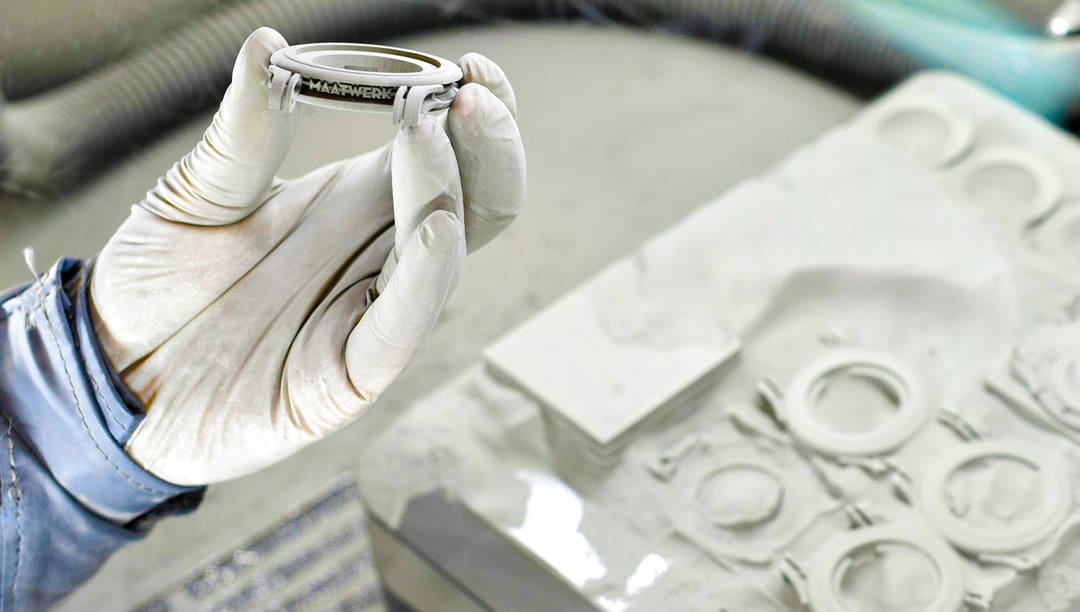
For most manufacturers, the metal powder recommended by your 3D printer vendor will result in metal parts that fit your application, but this only scratches the surface of what’s possible with metal additive manufacturing.
“Given AM’s penetration into super high-value markets, including nuclear energy, defense, and space, the ability to create entirely new powder materials not previously possible also means pushing AM even further into the conversation when it comes to revolutionizing these and potentially other industries,” according to SmarTech/6K Additive research, Metal Additive Goes Full Scale.
Working with a powder manufacturer could result in parts that give companies in industries such as aerospace and medical a competitive advantage.
“Seasoned additive manufacturing users looking for a new machine tend to be more adventurous about getting into new materials,” says Nuechterlein. “If there’s an alloy available on a machine that gives them a wildly different capability, they’ll add that new tool with that new capability.”
Despite the potential, the lack of standards is still a hurdle, experts agree. “If there were generally agreed upon standards that all of the powder manufacturers started with,” says Nuechterlein, “and then all of the other machine standards built off of that standard, it could save everyone a ton of money and time and effort, and we’d be 10 years down the line as far as advancing this technology.”
Top Suppliers of Metal Powder for Additive Manufacturing
If you’re ready to branch out from the metal powders validated for your metal 3D printer (many of which come from the suppliers below), look for a producer with deep experience in additive manufacturing. In addition to offering the material, many will also develop print perimeters for your machine. Typically, you’ll want your metal printer maker and your powder producer in the boat when developing new material applications.
GNK Powder Metallurgy
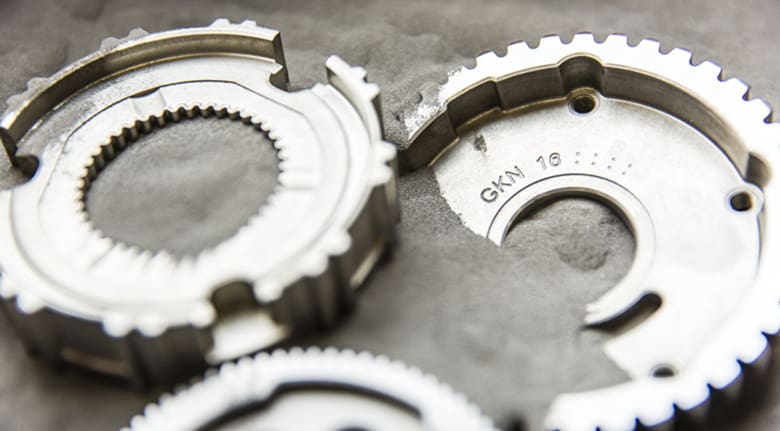
GKN Powder Metallurgy, based in Germany, not only provides traditional and additive manufacturing markets with metal powder materials, but also produces custom metal components and electric motor solutions. GKN Powder Metallurgy has three focused businesses under one brand: GKN Powders/Hoeganaes, GKN Sinter Metals, and GKN Additive/Forecast3D, which is the company’s 3D printing arm.
GKN offers more than 20 gas-atomized metals for additive manufacturing and will develop custom materials for your specifications.
Alloy Portfolio:
- Nickels
- Aluminums
- Stainless Steels
- Steels
- Coppers
- Custom
Sandvik
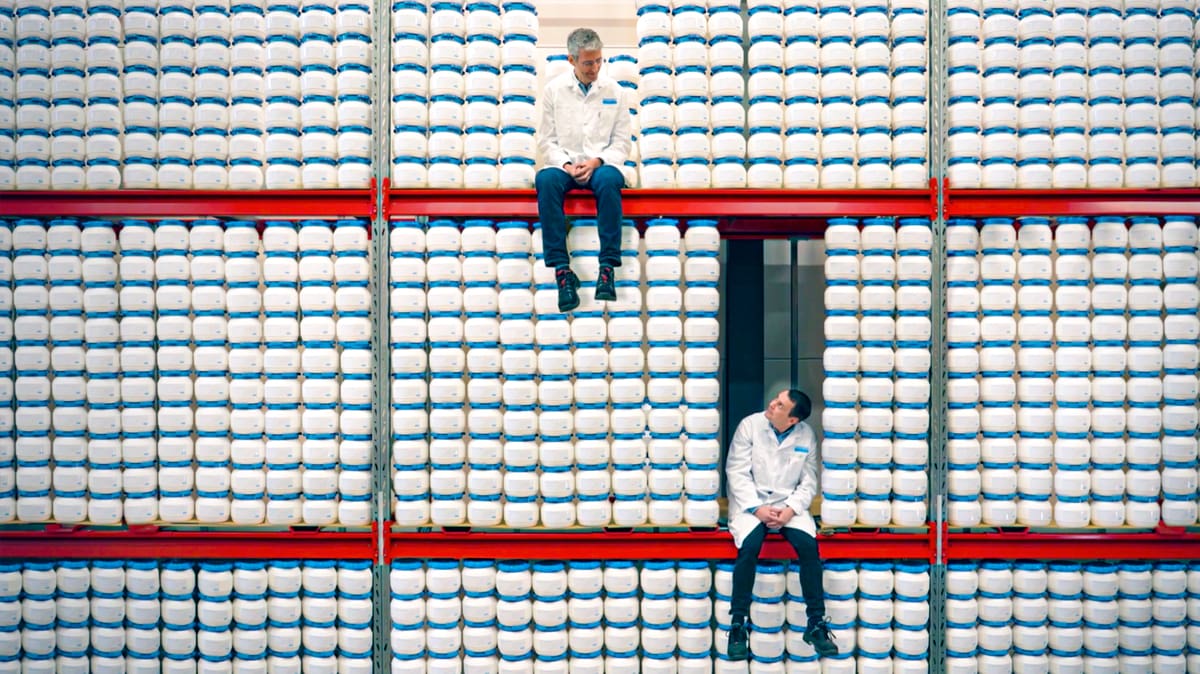
Sandvik AB is a Swedish multinational engineering company specializing in products and services for mining, rock excavation, rock drilling, rock processing, metal cutting, and machining. In addition, it’s one of the world’s largest producers of metal powder for both traditional and additive manufacturing.
The company claims to offer the widest range of gas-atomized alloys on the market (2,000 alloy variations with 400 metal powder alloys in stock), and will customize powders to fit your every need. The company’s brand of metal powders is called Osprey. The company offers a metal powder webshop and can deliver to throughout Europe within 48 hours.
Alloy Portfolio:
- Nickels
- Aluminums
- Stainless Steels
- Steels
- Coppers
- Titaniums
- Cobalt chromium
- Custom
Höganäs
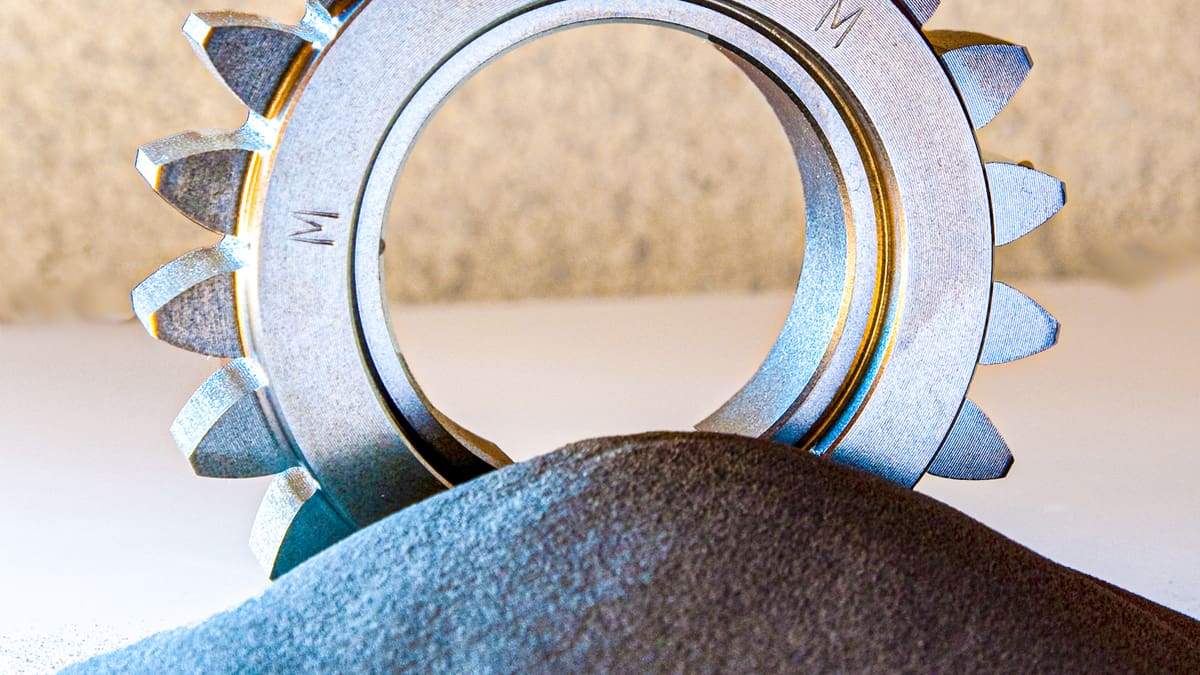
Höganäs, based in Sweden, is another one of the world’s largest producers of metal powders for traditional and additive manufacturing. Its powders are used in laser powder bed fusion, metal binder jetting, direct energy deposition, electron beam melting, and cold spray.
Höganäs uses a type of gas atomization called vacuum induction melting inert gas atomization or VIGA, which it says leads to large volumes of spherical, high-grade metal powders. The company operates eighteen production centers worldwide.
Höganäs’ online powder finder database, where you can search by powder type, additive manufacturing technology, and application, is exceptionally handy.
Alloy Portfolio:
- Nickels
- Aluminums
- Stainless Steels
- Steels
- Coppers
- Titaniums
- Cobalt chromium
- Custom
Carpenter Additive
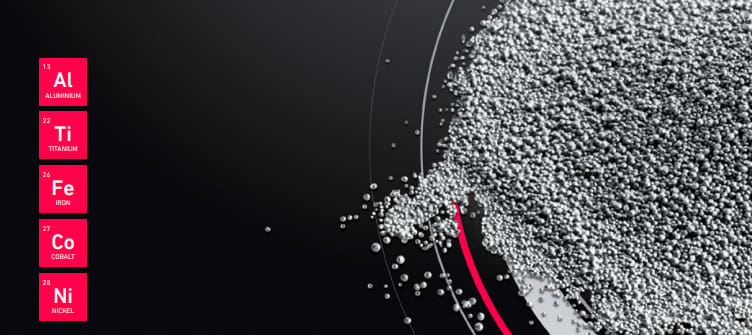
Carpenter Additive is a business unit of Philadelphia-based metal material giant Carpenter Technology, focusing exclusively on the manufacture, development, and processing of metal powders for metal additive manufacturing. They not only produce powders but develop new alloys for AM and provide application support.
The company’s powders are called PowderRange, and meet a range of quality management standards including AS 9120, AS 9100, ISO 9001 and ISO 13485. Carpenter Additive has a metal AM powder manufacturing facility near Liverpool, UK, with sites across the US and Europe.
Alloy Portfolio:
- Stainless Steels
- Nickels
- Steels
- Titaniums
- Alumiums (inkl. Scalmalloy)
- Custom
Elementum 3D
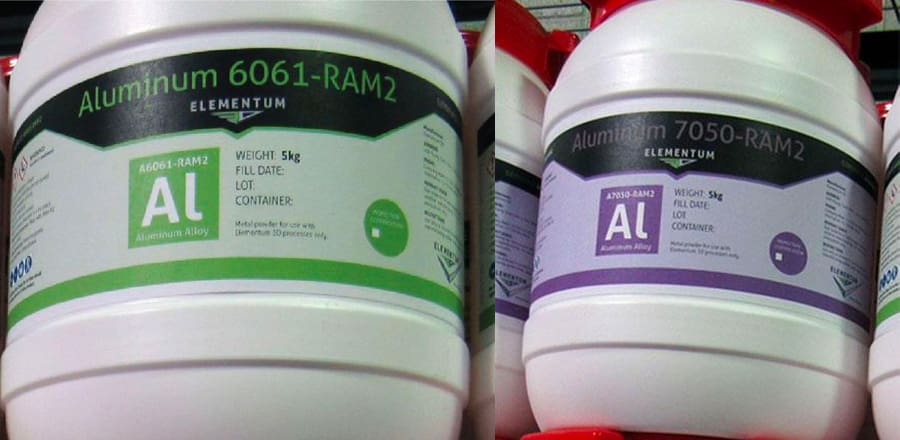
Elementum 3D not only makes metal, ceramic, and composite powders for additive manufacturing but conducts research and develops print process parameters. The company says its mission is to offer advanced materials that can’t be found anywhere else.
Unique to Elementum is its RAM technology that blends metals with ceramics that improve the performance of the metal in 3D printing.
Alloy Portfolio:
- Nickels
- Steels
- Coppers
- Tungstens
- Tantalum
- Aluminum
- Custom
Metal Powder Works
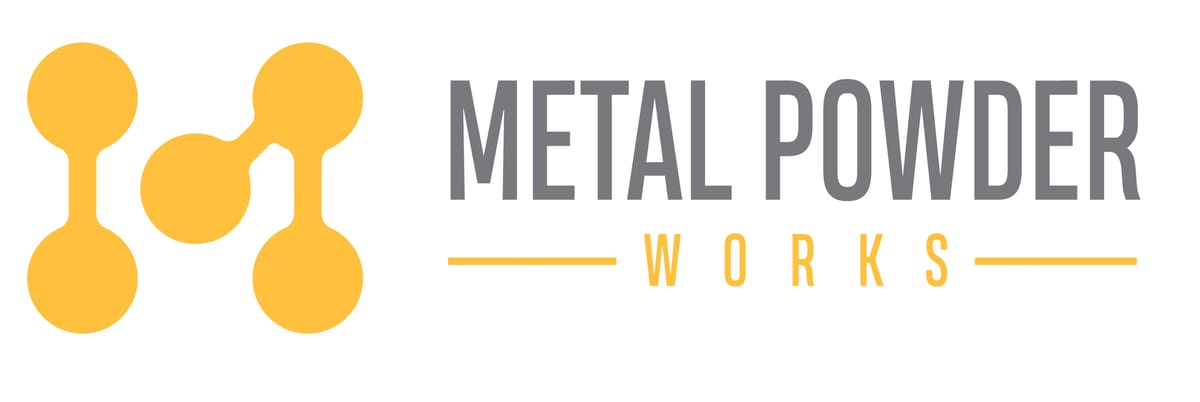
Metal Powder Works’ founders John E. Barnes and Christopher Aldridge, veterans of the aerospace and defense markets, think about powder production in new way resulting in a patent-pending process that produces tailorable powders in a wide variety of alloys.
The company’s approach doesn’t require melting to produce metal powder and is more efficient than traditional atomization, it produces less waste and emits 90% less CO2 than atomizing.
Alloy Portfolio:
- Aluminum 7075
- Aluminum 6061
- Aluminum 7050
- Copper
- Custom
6K Additive

6K Additive is a producer of metal powder for additive manufacturing using metal that comes from sustainable sources, it says, such as used powders and machine turnings, to essentially turn scrap into AM powder. The company will even buy your used powder, and provide you a credit towards new premium powder for a wide variety of applications.
6K’s proprietary UniMelt system is a microwave production-scale plasma atomization system that delivers powder for any additive manufacturing platform, including laser powder bed fusion, EBM, binder jet, direct energy deposition, and cold spray. 6K additive also custom-develops materials for unique applications.
Recently, the company announced an agreement with 3D printer maker 3D Systems to become the preferred supplier of tungsten powder for its laser powder bed fusion machines.
Alloy Portfolio:
- Nickels
- Stainless Steels
- Coppers
- Tungstens
- Niobium
- Titaniums
- Rhenium
- Molybdenum
- GRCop
- Custom
PyroGenesis Additive
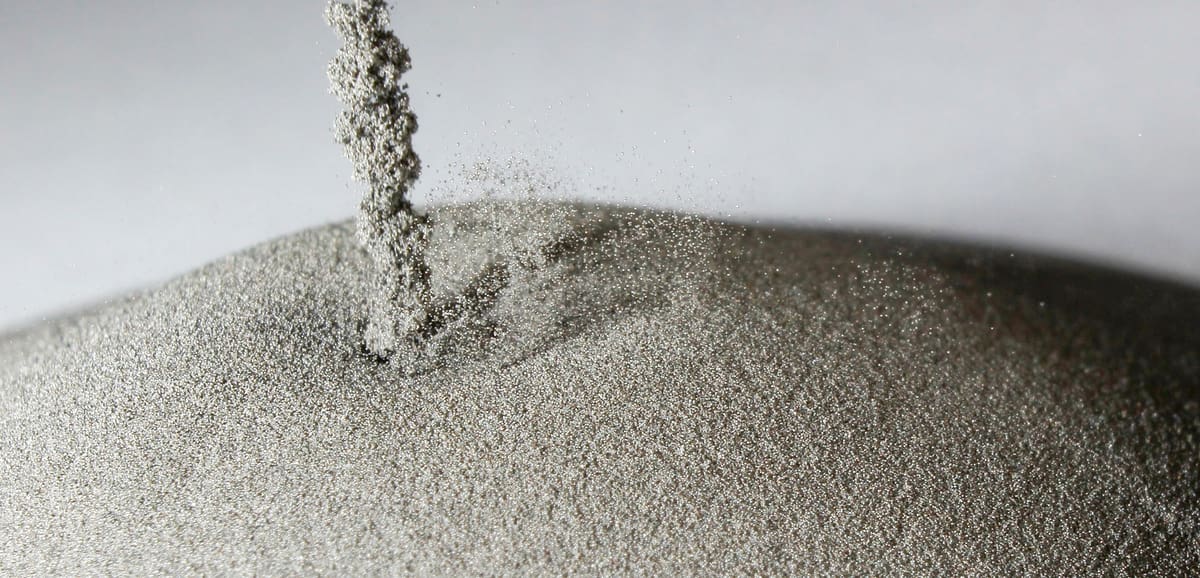
Canada-based PyroGenesis invented plasma atomization of metal into metal powder and its additive manufacturing wing, PyroGenesis Additive, continues to produce sought-after powders for additive manufacturing.
The company recently announced that it received a signed order for five metric tonnes of its plasma atomized titanium metal powders for 3D printing to an undisclosed customer.
Alloy Portfolio:
- Titaniums
- Custom
Equispheres
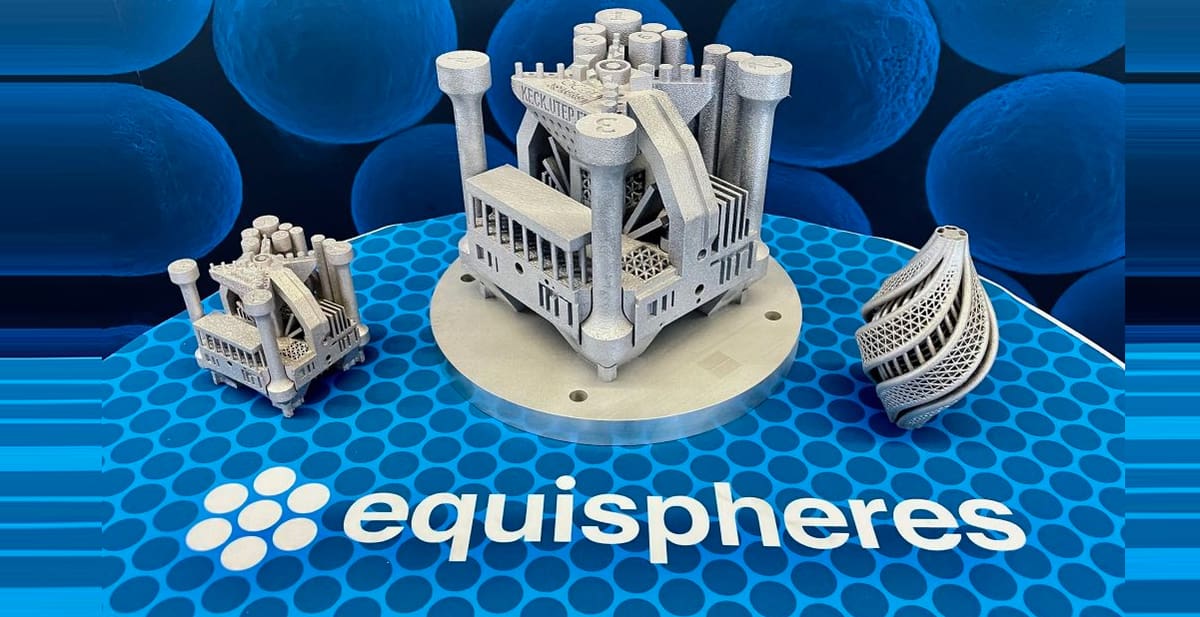
Equispheres’ atomization technique produces a powder that is uniform in size, sphericity, and consistent microstructure, the company says. As a result, it can be more rapidly manufactured. The company works with several 3D printer makers to further economical aluminum additive manufacturing at a production scale.
The company says every purchase of Equispheres powder is supported by its professional applications engineering services team to ensure a seamless transition from you current powder.
Alloy Portfolio:
- Aluminum
Lead image source: The scaled-down version of the heat exchanger designed by Josefine Lissner using computational engineering was printed on an SLM Solutions SLM 280 3D printer, equipped with the Fraunhofer IGCV proprietary multi-material powder deposition solution. Photo courtesy Timo Schröder, Fraunhofer IGCV.
License: The text of "Metal Powder for Metal 3D Printing – Buyer’s Guide" by All3DP Pro is licensed under a Creative Commons Attribution 4.0 International License.
